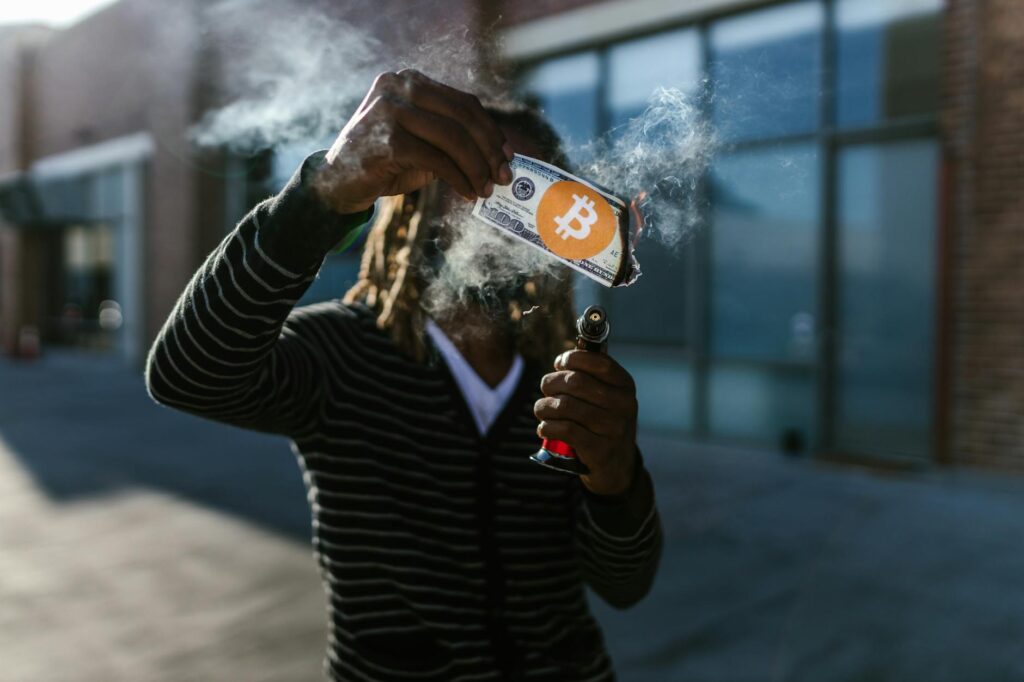Sending Money Home Shouldn’t Cost a Fortune. Here’s How Crypto is Fixing That.
Let’s talk about something incredibly personal for millions of people: sending money back home. For anyone who has worked abroad to support family, the process is painfully familiar. You go to a wire transfer service, fill out forms, and watch as a hefty chunk of your hard-earned money gets eaten by fees and terrible exchange rates. It then takes days—actual days—for that money to arrive. It’s a frustrating, expensive, and outdated system. But what if there was a better way? This isn’t some far-off futuristic dream; it’s happening right now. The most powerful, real-world application of crypto in cross-border remittances is quietly revolutionizing how money moves around the globe, and it’s time we paid attention.
Key Takeaways
- Traditional remittance services like banks and wire transfers are slow and expensive, often charging 6-10% in fees.
- Cryptocurrency, particularly stablecoins, offers a faster, cheaper, and more transparent alternative for sending money internationally.
- The process involves converting local currency to crypto, sending it across borders nearly instantly, and converting it back to the recipient’s local currency.
- This technology significantly benefits the unbanked and underbanked populations who lack access to traditional financial services.
- While challenges like regulatory uncertainty and user education exist, the benefits are already creating a massive shift in the remittance industry.
The Staggering Problem with the Old Way
To really grasp why crypto is such a game-changer, you first need to understand just how broken the traditional system is. We’re talking about a global remittance market worth over $600 billion annually. That’s a staggering amount of money, mostly sent in small increments by hardworking individuals to their families in developing nations.
And yet, the infrastructure behind it feels like it’s from the 1980s. When you send money through a bank or a service like Western Union, you’re not just paying one fee. You’re paying a tangled mess of them.
- The Sending Fee: This is the upfront cost they advertise. It might seem small, but it’s just the beginning.
- The Hidden Exchange Rate Markup: This is where they really get you. The service provider offers you an exchange rate that’s significantly worse than the actual market rate. The difference? They pocket it. It’s a hidden fee that can cost you an extra 3-5%.
- The Receiving Fee: Sometimes, the bank or agent on the other end also takes a cut before handing the cash to your family.
Add it all up, and the World Bank reports the global average cost of sending remittances is over 6%. On a $200 transfer, that’s $12 gone. For someone supporting a family on a tight budget, $12 is groceries for a few days. It’s medicine. It matters. Beyond the cost, there’s the speed. Or rather, the lack of it. International transfers can take 3-5 business days. Why? Because your money is bouncing between multiple intermediary banks (called correspondent banks), each taking their time and their cut. In an age of instant communication, this is just unacceptable.

How Crypto Flips the Script on Remittances
So, how does crypto solve this? It’s not about sending volatile assets like Bitcoin, where the value could plummet mid-transfer. While that’s possible, the real heroes of this story are stablecoins.
Meet the Stablecoin: The MVP of Crypto Remittances
A stablecoin is a type of cryptocurrency that is pegged to a stable asset, usually a major fiat currency like the U.S. Dollar. Think of coins like USDC (USD Coin) or USDT (Tether). One USDC is designed to always be worth one U.S. Dollar. This simple innovation removes the wild price volatility that makes other cryptocurrencies impractical for something as sensitive as a family remittance.
Using stablecoins, the remittance process is completely transformed:
- Step 1: On-Ramp. The sender in, say, the United States, uses a crypto exchange or a specialized remittance app. They take their US Dollars and buy an equivalent amount of a stablecoin like USDC. The fee for this is usually a fraction of a percent.
- Step 2: The Transfer. The sender sends the USDC directly to the recipient’s digital wallet address in another country, for example, the Philippines. This transfer happens on a blockchain. It doesn’t matter if it’s 2 AM on a Sunday or if the recipient is halfway around the world. The transaction typically confirms in seconds or minutes, not days. The cost? Pennies. Literally, just pennies for the network fee.
- Step 3: Off-Ramp. The recipient in the Philippines receives the USDC in their wallet. They can then use a local exchange or service to instantly sell the USDC for Philippine Pesos and withdraw it to their bank account or even pick it up as cash.
The entire chain of intermediary banks is gone. The arbitrary delays are gone. The hidden fees are gone. What’s left is a direct, fast, and incredibly cheap transfer of value from one person to another.
The Real-World Benefits of Using Crypto in Cross-Border Remittances
This isn’t just a theoretical improvement. This is a profound change that delivers tangible benefits to the people who need it most. When you strip away the jargon, the advantages are crystal clear.
Slashing Fees to a Fraction of the Cost
We talked about the 6%+ average fee in the traditional world. With crypto, the total cost for the entire process—on-ramp, transfer, and off-ramp—can often be kept under 1-2%. Think about that. On that same $200 transfer, the cost drops from $12 to maybe $2-$4. That’s an extra $8-$10 in your family’s pocket. Multiplied by millions of transfers every single day, we’re talking about billions of dollars being put back into the economies of developing nations instead of into the pockets of financial middlemen.
Speed That Bypasses Banking Hours
Emergencies don’t wait for banking hours. When a family member has an urgent medical need, waiting three to five business days for money to arrive can be agonizing. Blockchain networks operate 24/7/365. A crypto-based remittance can be sent and received in minutes, anytime, day or night. This speed isn’t a luxury; it’s a lifeline. It provides peace of mind and the ability to respond to crises immediately, which is something the legacy system simply cannot offer.
“We are moving from a world where sending money is like sending a package—slow, expensive, and opaque—to one where it’s like sending an email: instant, nearly free, and direct.”
Unprecedented Transparency and Security
Ever sent a wire transfer and had it get “stuck” somewhere in the system? You call customer service and no one seems to know where your money is. It’s a black box. Blockchains, by their very nature, are transparent. Every transaction is recorded on a public, immutable ledger. You can literally track your transfer from your wallet to the recipient’s in real-time. There’s no guessing. It’s either sent or it’s not. This transparency builds trust and eliminates the anxiety of the unknown.
Financial Inclusion for the Unbanked
Perhaps the most profound impact is on the unbanked. According to the World Bank, about 1.4 billion adults globally do not have a bank account. However, many of them do have a mobile phone. To use crypto, you don’t need a bank account, a credit history, or a physical address approved by a financial institution. All you need is a smartphone and an internet connection to set up a digital wallet. Suddenly, a person who was completely excluded from the global financial system can receive money from anywhere in the world, securely and efficiently. This is a revolutionary leap forward for financial inclusion.

The Challenges and Hurdles (It’s Not Perfect… Yet)
Of course, it would be dishonest to pretend this transition is without its challenges. The road to mass adoption is paved with hurdles that need to be addressed.
- The User Experience (UX) Gap: Let’s be honest, using crypto can still be intimidating for a newcomer. Concepts like wallet addresses, private keys, and gas fees are not intuitive. The industry is working hard to build user-friendly apps that hide this complexity, but there’s still a learning curve that can be a barrier for less tech-savvy users.
- Regulatory Quicksand: Governments around the world are still figuring out how to regulate cryptocurrencies. The rules can change quickly and vary dramatically from one country to another. This regulatory uncertainty can make it difficult for remittance companies to operate and can sometimes create friction at the on-ramp and off-ramp points.
- Last-Mile Liquidity: It’s great if you can send USDC to a village in a developing country, but it’s only useful if the recipient can easily convert it into local cash to buy food. Building out these reliable “off-ramps” in every corner of the world is a massive logistical challenge that is still a work in progress.
- Scams and Security: The crypto space is, unfortunately, a target for scammers. Educating users on how to protect their funds, avoid phishing attacks, and use self-custody wallets safely is absolutely critical to building long-term trust.
Companies Making it Happen Today
This isn’t just theory. Companies are building massive businesses on these rails right now. Look at the U.S. to Mexico corridor, one of the largest remittance channels in the world. Companies like Bitso have become major players, processing billions of dollars in remittances using crypto. They provide the backend infrastructure that allows traditional remittance providers to use crypto for settlement, making the process faster and cheaper without the end-user even knowing they’re using blockchain.
Another example is Strike, which uses the Bitcoin Lightning Network to facilitate near-instant, low-fee payments across borders. It has expanded its services to countries like the Philippines and El Salvador, demonstrating a clear demand for a better alternative.
Conclusion
For years, crypto has been searching for its “killer app”—a use case so compelling that it breaks through the noise of speculation and reaches the average person. While areas like DeFi and NFTs get a lot of headlines, the use of crypto in cross-border remittances might just be it. It’s not about getting rich quick or trading meme coins. It’s about solving a fundamental, human problem for hundreds of millions of people.
It’s about giving a migrant worker in Dubai a better way to send money to his family in Pakistan. It’s about ensuring a daughter in Canada can get emergency funds to her mother in Nigeria in minutes, not days. It’s about restoring dignity and fairness to a system that has been exploitative for far too long. The technology is still evolving, and the challenges are real. But the promise is undeniable. This is crypto at its best: using decentralized technology to empower individuals and create a more equitable global financial system, one transfer at a time.


